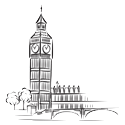
|

|
|
|
Feature Articles |
|
September 2014 the Demise of the American Mafia By Emma Stevens  Emma Stevens is a London based Business and Finance writer. Emma Stevens is a London based Business and Finance writer. |
|
The drug trade and the demise of the American mafia Although the speculation that many mafia dons were reluctant at first to enter into the drugs trade there is only a little evidence that suggests this was the case. A few mafia Dons were unwilling to let their crews from dealing - Paul Castellano, head of the Gambinos, was one - however for many others the potential money that could be made from the drug trade was too much to ignore. Even Castellano could not stop the narcotic trade overtaking his business and met his death after a dissenting group, led by the notorious John Gotti, decided that narcotics were the best way forward for the Gambinos. China and the origins of the drug trade Before most mafia families decided to take their chances with the drugs trade, most of America�s drugs, specifically heroin, came from China. A small supply also came from Corsica, France and the Middle East, but the vast majority was brought in from China. During World War II, the networks that the drug travelled through was irreparably disrupted and Japan's invasion of China came close to completely stopping the supply. During this time, as the supply was non existent, the demand for heroin went down in the USA. It was around this time that a lot of mafia families, with connections within the United States intelligence services, realized that if they could get the supply up and running again, they could make a fortune. The Chinese communist revolution in 1949 was the icing on the cake and as organised crime in China fell, the mafia in the USA were rubbing their hands together. A brief history of the mafia and narcotics Many families saw the opportunities offered by the sale of illegal drugs. Even before they were ruled illegal by the supreme court, certain regions, including New Orleans were involved in mafia controlled drug circuits. The main offender was marijuana which dates back as far as the nineteenth century when it was popular among the African-American communities. The mafia tended to act as though they were above drugs and talked of not wanting to destroy children�s lives. However, the inherent racism in the mafia at this time was a factor in their nonchalance about the negative effects drugs had on other ethnic groups. A growing business The mafia's involvement in drugs slowly spread north as the mob bosses in Chicago and New York realized that there was money to be made. Many of the older generation disregarded the drug trade with contempt and preferred to stick to the more honest bootlegging, prostitution and gambling rackets. Even the law officials viewed the �classic� mob rackets as harmless and tended to turn a blind eye. The same would not happen for the drugs racket. A sensible solution In 1993 Franklin Delano Roosevelt repealed the prohibition and the mafia lost a huge amount of business. They decided to turn their attention to heroin to keep their cash flow from plummeting. Though there were a lot less heroin addicts that alcohol addicts, the profit margin would be much higher and it would be a lot easier to smuggle. Unknown to many of the mobs, heroin would also prove to be extremely difficult to give up, creating a growing mass of very dependent customers. The legacy of this problem continues to this day with heroin addicts and recovering methadone addicts present in large numbers in every state today. The difficulty of changing traditional mafia business The transition for the mafia into narcotics, however, wasn�t easy. During the transition, as the mafia�s power slowly dwindled, Mexican cartels had already started to move in with cocaine from Colombia. Motorcycle gangs started producing and selling methamphetamine and Israeli mobs controlled the ecstasy trade. To ensure a loyal customer base from the outset, many of the mobs slowly got the prostitutes who worked for them addicted to ensure they remained loyal. Not only that, but any money they made from prostitution was guaranteed to go back to the mob in drug money. This method was masterminded by Lucky Luciano, who had 1,200 prostitutes in his control earning him $10 million a year. He remained in complete control of the heroin trade during his exile in Italy. The Federal Bureau of Narcotics The Federal Bureau of Narcotics (FBN), now known as the Drug Enforcement Agency (DEA), were the first to realize that the mafia were the big players in the heroin trade. They listed the major players, financiers, and rackets across the whole country. Their tactics were revolutionary and very effective. They hired Italian, Middle Eastern, and Asian agents to infiltrate the rackets and bring them down from the inside. By the 1960s, the FBN had a massive database of mobsters that would be the start of the end for the mafia and the drugs trade. Sources http://www.samhsa.gov/data/nsduh/2012summnatfinddettables/nationalfindings/nsduhresults2012.htm http://www.narconon.org/drug-information/heroin-history.html http://www.history.com/topics/origins-of-the-mafia http://www.mafiamob.com/history.htm
|
|
AmericanMafia.com
Copyright © 1998 - 2014 PLR International
|